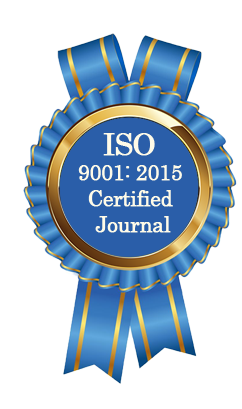| All | Since 2020 | |
| Citation | 105 | 60 |
| h-index | 4 | 4 |
| i10-index | 3 | 2 |
WJAHR Citation 
Login
News & Updation
Best Article Awards
World Journal of Advance Healthcare Research (WJAHR) is giving Best Article Award in every Issue for Best Article and Issue Certificate of Appreciation to the Authors to promote research activity of scholar.
Best Article of current issue
Download Article : Click here
Indexing
Abstract
PREVALENCE AND ANTIBIOGRAM OF BACTERIAL PATHOGENS ISOLATED FROM PATIENTS PRESENTING WITH NOSOCOMIAL INFECTIONS AT ALEX EKWUEME FEDERAL UNIVERSITY TEACHING HOSPITAL ABAKALIKI
Lilian Obinna Asogwa, E. C. Okonkwo, *Anoh Ruth Eberechukwu and Ikeria Oluchi Cynthia
ABSTRACT
This study was aimed at determining the prevalence and antibiogram of bacterial isolates implicated in nosocomial infections among hospitalized patients at Alex Ekwueme Federal University Teaching Hospital Abakaliki Ebonyi State. A total of 120 (blood/urine) samples were collected from male and female patients that are on admission in the various hospital wards. The samples were analyzed bacteriologically using standard microbiological techniques for isolation and identification of the isolates. Antibiotics susceptibility testing was done against different classes of antibiotics using Kirby-Bauer disc diffusion method and multiple antibiotic resistance index (MARI) were determined. Out of the 120 samples analyzed, the overall prevalence of bacteria isolates was reported to be 71 (59.2%). The bacteria isolate that were identified from the samples analyzed includes E. coli 26 (21.7%), Staphylococcus spp. 17 (14.2%), Pseudomonas spp. 16 (13.3%) and Klebsiella spp 12 (10.0%). Exactly, 34 (58.6%) samples were positive for the bacteria isolates from male and 37 (59.7%) were positive for female patients. Ceftriaxone were highly susceptibility to E. coli. Staphylococcus spp isolated from both blood and urine samples have susceptibility range of 12.5% to 33.3%. Pseudomonas spp isolated from both samples showed relatively moderate level of resistance against gentamycin, ceftriaxone, ciprofloxacin, amoxicillin and tetracycline from 16.7% to 66.6%. Klebsiella spp isolated from urine showed high level of resistance to gentamicin (75.0%) and moderate resistance was observed in isolates from both samples to other tested antibiotics which includes amoxicillin, ciprofloxacin, ceftriaxone and tetracycline with resistance of 25.0% to 62.5%. The MARI value of the bacteria isolates was observed among the E. coli (MARI - 0.6), Staphylococcus spp. (MARI - 0.5), Pseudomonas spp. (MARI - 0.4) and Klebsiella spp. (MARI - 0.7). The average MARI reported among the bacteria isolates was 0.5. In conclusion, presence of multidrug resistance E. coli, Staphylococcus spp., Pseudomonas spp., and Klebsiella spp. were reported among patients admitted in various wards at Alex Ekwueme Federal University Teaching Hospital Abakaliki. We therefore recommend stringent antibiotic administration policies for patients and continuous surveillance on the emergence of antimicrobial resistance in the hospital environment.
[Full Text Article] [Download Certificate]
